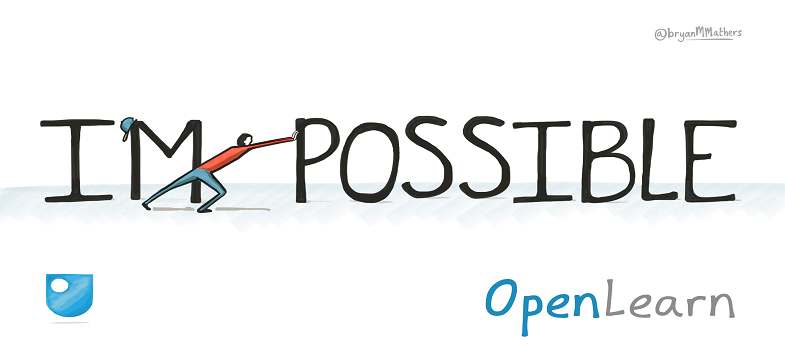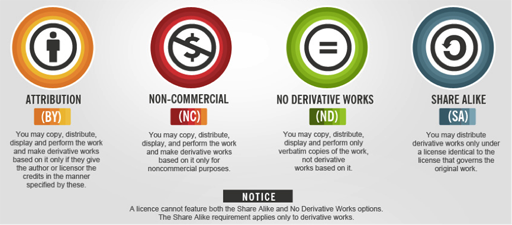4.2 Creative Commons licensing
This section describes the most common form of open licence: the Creative Commons set of licences.
Creative Commons licensing lets you know how the original author would like their material to be reused, while they retain the copyright.
Other open courses have explained the creative commons licence system very well, so rather than repeat their guidance in this course we suggest you explore the following for concise explanations about open licences, why they are used and how to use them:
- Becoming an open educator [Tip: hold Ctrl and click a link to open it in a new tab. (Hide tip)]
- Learning to (Re)Use Open Educational Resources
For reference, the main types of CC licence, which can be combined, are as follows (see also Figure 1):
- Attribution (BY) – You may copy, distribute, display and perform the work and make derivative works based on it only if they give the author or licensor the credits in the manner specified by these.
- Non-Commercial (NC) – You may copy, distribute, display and perform the work and make derivative works based on it only for noncommercial purposes.
- No Derivative Works (ND) – You may copy, distribute, display and perform only verbatim copies of the work, not derivative works based on it.
- Share Alike (SA) – You may distribute derivative works only under a license identical to the license that governs the original work.
Note that a licence cannot feature both the Share Alike and No Derivative Works options. The Share Alike requirement applies only to derivative works.
4.1 Why reuse other open content in your course?

